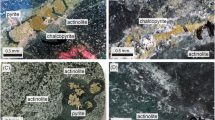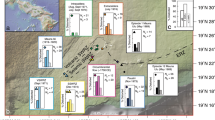Abstract
METALLOGRAPHIC examination of samples from the British Museum collection confirms the fact1 that Neumann bands exist only in regions near to the original surface of the Reed City meteorite (B.M. 86426); and also reveals their presence in association with the deep cracks which follow the massive phosphide crystals in the Hammond Township meteorite (B.M. 67447). Both these meteorites have been thermally metamorphosed to a considerable extent and, apart from the instances quoted here, both are free of Neumann bands.
This is a preview of subscription content, access via your institution
Access options
Similar content being viewed by others
References
Maringer, R. E., and Manning, G. K., W.A.D.C. Tech. Rep. 59 (April 1959) and personal communication.
Author information
Authors and Affiliations
Rights and permissions
About this article
Cite this article
AXON, H. Formation Of Neumann Bands in the Reed City and Hammond Township Meteorites. Nature 202, 998–999 (1964). https://doi.org/10.1038/202998a0
Issue Date:
DOI: https://doi.org/10.1038/202998a0
Comments
By submitting a comment you agree to abide by our Terms and Community Guidelines. If you find something abusive or that does not comply with our terms or guidelines please flag it as inappropriate.



